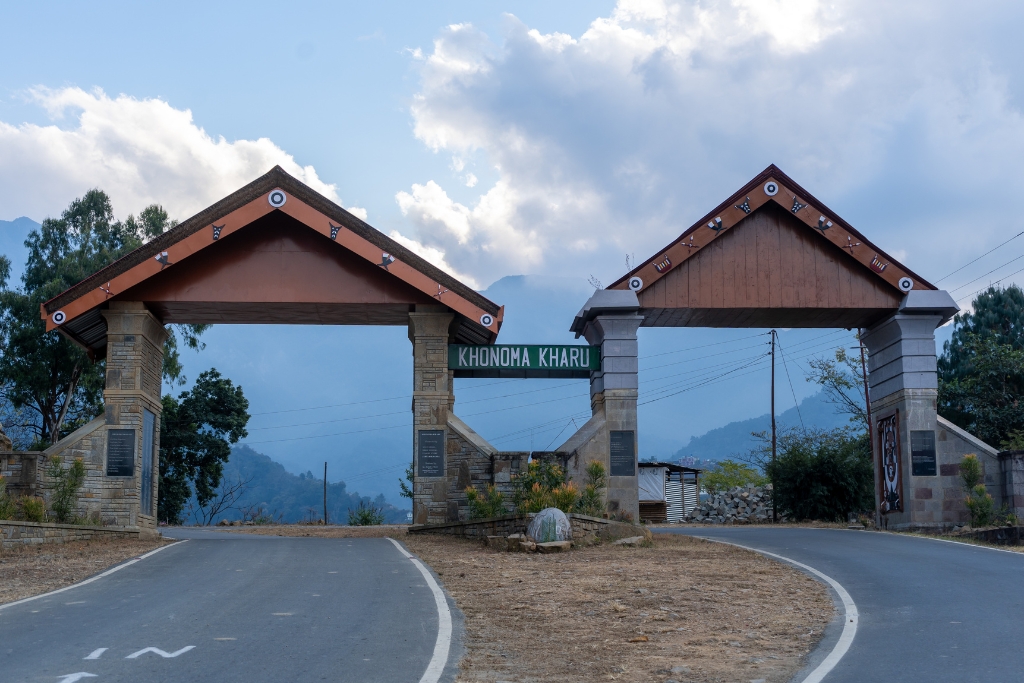Khonoma, located approximately 20 kilometers from Kohima, the capital of Nagaland, is recognised as India’s first ‘green village’. Renowned for its sustainable practices and rich biodiversity, Khonoma stands as a model of eco-friendly living in the region. In 1998, the Khonoma Nature Conservation and Tragopan Sanctuary was set up to protect the endangered Blyth’s Tragopan and other wildlife and rare plant species in their natural habitat.
Gates in Nagaland symbolise cultural heritage, serving as intricate displays of craftsmanship, tradition, and the region’s rich history and beliefs. Upon arrival, visitors are welcomed by the imposing entrance gate of Khonoma village, a striking symbol of its cultural heritage.
The people of Khonoma take great pride in preserving the sanctity and beauty of their village, tending to it with care and diligence. Tourists are strictly advised to respect the local rules and preserve the sanctity of the village. Visitors must ensure the area remains clean and refrain from littering.
Also read: The silent scream of Noh Ka Likai falls
The village beautifully blends ancient traditions with modern norms, creating a harmonious balance between heritage and contemporary life. This structure serves as a meeting place for the village elders to discuss important matters. In ancient times, it also functioned as a place where justice was administered.
Scattered throughout the village are small, makeshift shops, many of which operate without shopkeepers. Visitors can help themselves to items and leave payment in an honesty box. Some shops even offer the convenience of UPI payment options.
The village beautifully blends ancient traditions with modern norms, creating a harmonious balance between heritage and contemporary life. Dustbins are strategically placed throughout the village to help maintain its cleanliness. Visitors are kindly advised to make use of these bins, which are readily available at various locations.
The EcoTourism Management Committee (ETMC) office is located at the entrance of the village, where visitors can hire a guide. Permission from the ETMC is required for filming videos intended for commercial purposes.
Every village in Nagaland has its own unique folklore, and Khonoma is no exception, with rich stories passed down through generations. This owl-shaped stone, known as Terhuotsiese, is believed by the people of Khonoma to ward off evil spirits. Legend has it that it was erected by the spirits themselves.
Also read: Key Monastery – The Crown Jewel of Spiti
Mithun, the state animal of Nagaland, symbolises unity and oneness. It is also seen as a symbol of prosperity and status within the local tribal community and can often be found roaming freely around the village.
Around Khonoma, statues and monoliths stand as testaments to the battles and victories of brave Naga warriors, each telling the story of their lives and symbolising Naga unity.
The lead image on top depicts the beauty of Khonoma, a village that’s renowned for its sustainable practices and rich biodiversity. It stands as a model of eco-friendly living in the region.
Reporting and photography by Atiqur Rahman, a Delhi-based photographer who hails from Nagaland.

















